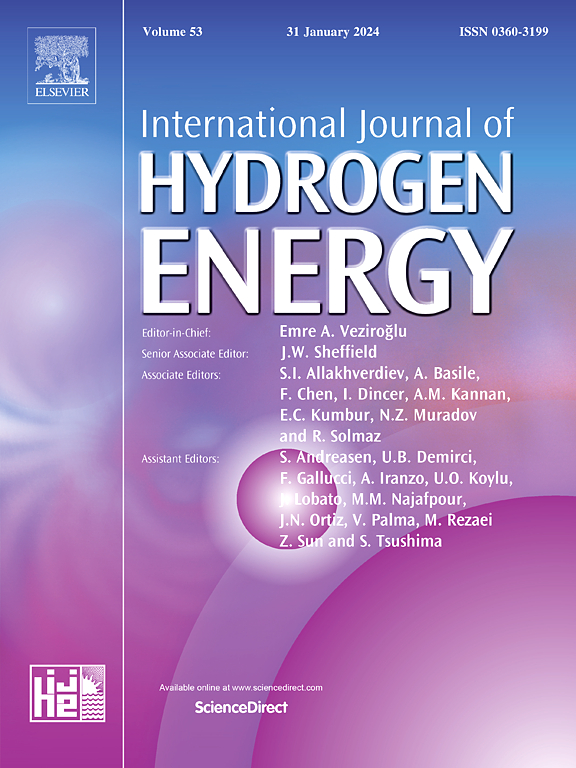Preparation and hydrogen permeation resistance of α-Fe2O3/Al2O3 composite coating via atomic layer deposition and plasma treatment
IF 8.1
2区 工程技术
Q1 CHEMISTRY, PHYSICAL
引用次数: 0
Abstract
The hydrogen isotope permeation barrier (HIPB) plays a crucial role in preventing hydrogen penetration in the hydrogen energy industry. Unlike the well-documented HIPB oxidations such as Al2O3, TiO2, Cr2O3, and Er2O3, rarely used α-Fe2O3 was applied as an intermediate layer in this study. An α-Fe2O3/Al2O3 HIPB was synthesized on T91 steel substrates via atomic layer deposition (ALD) and oxygen plasma treatment. By adjusting the applied power upon plasma treatment, α-Al2O3 was derived at 650 °C, facilitated by both the additional energy of ion bombardment and template effect of α-Fe2O3. The interfacial α-Fe2O3(104)/α-Al2O3(104) relation was observed, and the adsorption energy of H atoms in the interface region was calculated using the density functional theory (DFT) method. The experimental results of hydrogen permeation performance and corrosion resistance of the composite coatings indicate that the α-Fe2O3/Al2O3 HIPB shows excellent hydrogen-permeation resistance, outperforming previously reported HIPBs, providing a new approach for the preparation of high-performance hydrogen-resistant coatings.

原子层沉积和等离子体处理制备α-Fe2O3/Al2O3复合涂层及其抗氢渗透性能
氢同位素渗透屏障在氢能工业中起着防止氢渗透的重要作用。与已有文献记载的hib氧化如Al2O3, TiO2, Cr2O3和Er2O3不同,在本研究中很少使用α-Fe2O3作为中间层。通过原子层沉积(ALD)和氧等离子体处理,在T91钢基体上合成了α-Fe2O3/Al2O3 HIPB。通过调整等离子体处理的功率,α-Fe2O3在650℃下得到α-Al2O3,这主要得益于离子轰击的附加能量和α-Fe2O3的模板效应。观察了界面α-Fe2O3(104)/α-Al2O3(104)的关系,并利用密度泛函理论(DFT)方法计算了界面区H原子的吸附能。复合涂层的渗氢性能和耐蚀性实验结果表明,α-Fe2O3/Al2O3 HIPB具有优异的渗氢性能,优于已有报道的HIPB,为高性能耐氢涂层的制备提供了新的途径。
本文章由计算机程序翻译,如有差异,请以英文原文为准。
求助全文
约1分钟内获得全文
求助全文
来源期刊

International Journal of Hydrogen Energy
工程技术-环境科学
CiteScore
13.50
自引率
25.00%
发文量
3502
审稿时长
60 days
期刊介绍:
The objective of the International Journal of Hydrogen Energy is to facilitate the exchange of new ideas, technological advancements, and research findings in the field of Hydrogen Energy among scientists and engineers worldwide. This journal showcases original research, both analytical and experimental, covering various aspects of Hydrogen Energy. These include production, storage, transmission, utilization, enabling technologies, environmental impact, economic considerations, and global perspectives on hydrogen and its carriers such as NH3, CH4, alcohols, etc.
The utilization aspect encompasses various methods such as thermochemical (combustion), photochemical, electrochemical (fuel cells), and nuclear conversion of hydrogen, hydrogen isotopes, and hydrogen carriers into thermal, mechanical, and electrical energies. The applications of these energies can be found in transportation (including aerospace), industrial, commercial, and residential sectors.
 求助内容:
求助内容: 应助结果提醒方式:
应助结果提醒方式:


